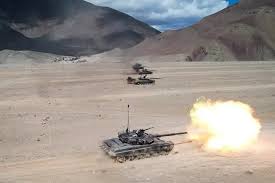
The Indian Army has conducted a strategic military exercise, ‘Parvat Prahaar’, in Ladakh, focusing on high-altitude warfare and operations. This exercise is crucial for maintaining the readiness and effectiveness of the Army in the region, which is close to the India-China border.
Focus on High-Altitude Warfare
The ‘Parvat Prahaar’ (Mountain Strike) exercise emphasizes mountainous and rugged terrains, such as those found in regions like Eastern Ladakh. The exercise, which continues for over a fortnight, involves simulating real-world combat scenarios to train soldiers in the unique challenges posed by such terrains.
Participation and Equipment
Various arms of the Army, including infantry, armoured, artillery, and support units, are participating in this drill. Different kinds of tanks, artillery guns including K-9 Vajra, air-defense systems, UAVs, and other aviation assets of the Army are showcasing their operability and war preparedness.
Strategic Importance
The Mountain Strike Corps of the Northern Command, responsible for operations in this sensitive region along the Line of Actual Control (LAC), is involved in the exercise. The strategic location of the region and its proximity to China make the ‘Parvat Prahaar’ an important drill.
Ongoing Standoff with China
India and China have been locked in a military standoff for more than four years since the Galwan clash, with numerous rounds of talks at both military and political levels failing to achieve significant progress. Since 2020, the Indian Army has deployed over 500 tanks and armoured fighting vehicles to the region and has rapidly developed infrastructure. Additionally, India has stationed over 50,000 troops to counter Chinese deployments across the Line of Actual Control, aiming to prevent any further attempts by China to alter the status quo.
Recent Developments
India and China have recently concluded a Working Mechanism for Consultation and Coordination on India-China Border Affairs (WMCC) meeting.





